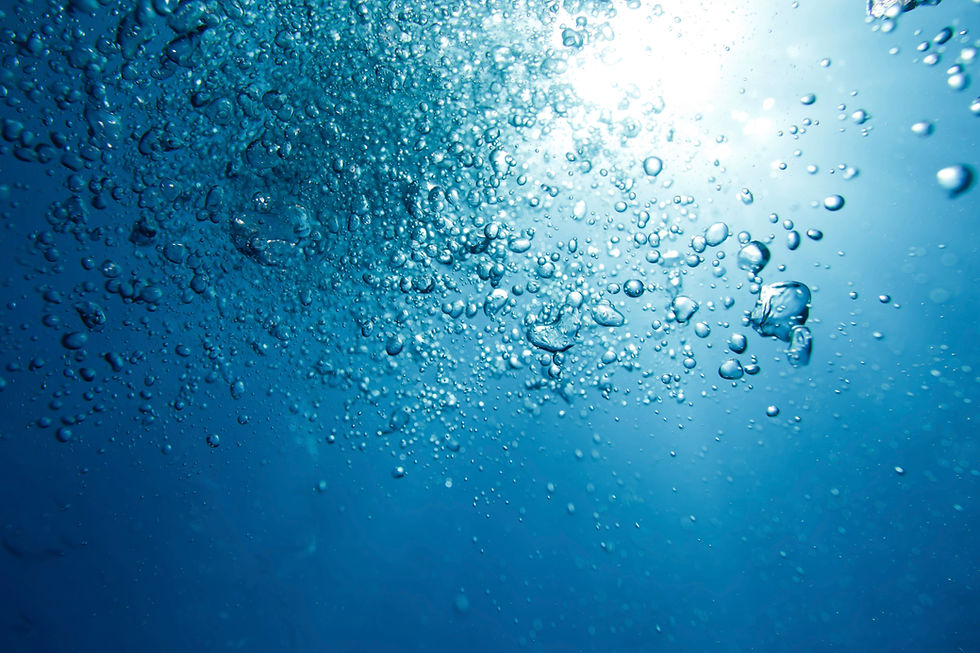Treatment Systems For Sulfate Removal in Water and Wastewater
- YASA ET
- Nov 1, 2022
- 3 min read
Sulfate in water can be harmful for humans and must be removed from effluents in industrial applications by using the correct water treatment systems before disposal.

What Is Sulfate in Water?
Sulfate, a soluble, divalent anion (SO42−), is produced from the oxidation of elemental sulfur, sulfide minerals, or organic sulfur, and is often found in ground water. Human made sources of sulfate include the burning of sulfur-containing fossil fuels, household wastes including detergents, and industrial effluents from tanneries, steel mills, sulfate-pulp mills, and textile plants.
High Sulfate Levels in Water Main Problems
The literature in this field clearly demonstrates that high sulfate level in waters may have toxic effects on plants and animal organisms, including, among others, fishes, invertebrates and amphibians, and it may also have negative implications for human health.
Animals are also sensitive to high levels of sulfate. In young animals, high levels may be associated with severe, chronic diarrhea, and in a few instances, death. As with humans, animals tend to become accustomed to sulfate over time. Diluting water high in sulfate with water low in sulfate can help avoid problems of diarrhea and dehydration in young animals and animals not accustomed to drinking high sulfate water. If sulfate in water exceeds 250 mg/L, a bitter or medicinal taste may render the water unpleasant to drink for humans and animals as well.
In industrial applications high sulfate levels may also corrode plumbing, particularly copper piping. Thus, in areas with high sulfate levels, plumbing materials more resistant to corrosion, such as plastic pipe, are commonly used. Moreover, the water requirements for industrial applications can be very strict, thus a pre-treatment system that removes sulphates may be required.
How to Measure Sulfate Levels in Water?
The only way to measure sulfate levels in your water or wastewater is by having the water tested at a laboratory. Once the levels of sulfate in the water are assessed, then a treatment method can be chosen among the most effective ones.
Typically, freshwater SO42- concentrations range from 0 to 630 mg L−1 in rivers, from 0 to 250 mg L−1 in lakes, and from 0 to 230 mg L−1 in groundwater; in seawater SO42- concentrations are typically 2.7 g L−1.
Instead, in industrial applications the sulfate levels can vary widely, thus it’s impossible to estimate those levels without a water content analysis for sulfates. In this case you can book a water analysis at our laboratory by clicking here.
Sulfate Removal Treatment System
Four main types of treatment systems will remove sulfate from water or wastewater:
Reverse osmosis pushes water through a membrane with tiny pores. The membrane stops many contaminants, including sulfate, while allowing water to pass through. Reverse osmosis usually removes between 93 and 99 percent of the sulfate in drinking water, depending on the type of treatment unit. Here you can find more information about Reverse Osmosis equipment.

Distillation is a process that boils water, making steam. The steam rises and leaves contaminants, such as sulfate behind. With proper operation, distillation units can remove nearly 100 percent of sulfate. Industrial evaporators, such as MVR evaporators can be used for this purpose.
Anion exchange is the most common method of removing large quantities of sulfate from water for commercial, livestock, and public supplies. It is not commonly used for individual household water treatment applications. This process replaces negatively charged ions (such as sulfate) with sodium chloride or potassium chloride (salts).
Adsorptive media filtration has a charged media bed that can force ions of the opposite charge (such as sulfate) to be pulled out of the water and attach to the media.
These treatment methods can be either used as pre-treatment for industrial applications that require high purity waters, or as after-treatment system. In this case, Electrodialysis (ED) or Electro-deionization (EDI) can be used as polishing treatment or for high purity water requirements. These technology can also be tested thanks to an ED test equipment.
Instead, there are three preferred treatment methods that will remove sulfate from drinking water: reverse osmosis, distillation, or ion exchange. On the other hand, carbon filters, water softeners and sediment filters will not remove sulfate from water.
How to Design a Sulfate Removal Treatment System?
The first step to design a sulfate removal treatment system is to run a complete laboratory analysis of the water. Once the analysis is ready, we can choose and configure the best equipment for your application, whether it’s a household drinking water or industrial application.
The best wastewater treatment method for the automotive industry and auto parts suppliers includes physico- chemical, Reverse Osmosis, Evaporation, and Crystallization technologies.
Our company, YASA ET designed and installed many treatment plants for companies and solved their wastewater treatment problems.
For more information about our reference projects you can get in touch at:
🌐 www.yasa.ltd(EN)
🌐 www.yashahuanjing.cn (中文)
📱 +86 136 3643 1077
YASA ET official online store > click here
Sources:

Comments